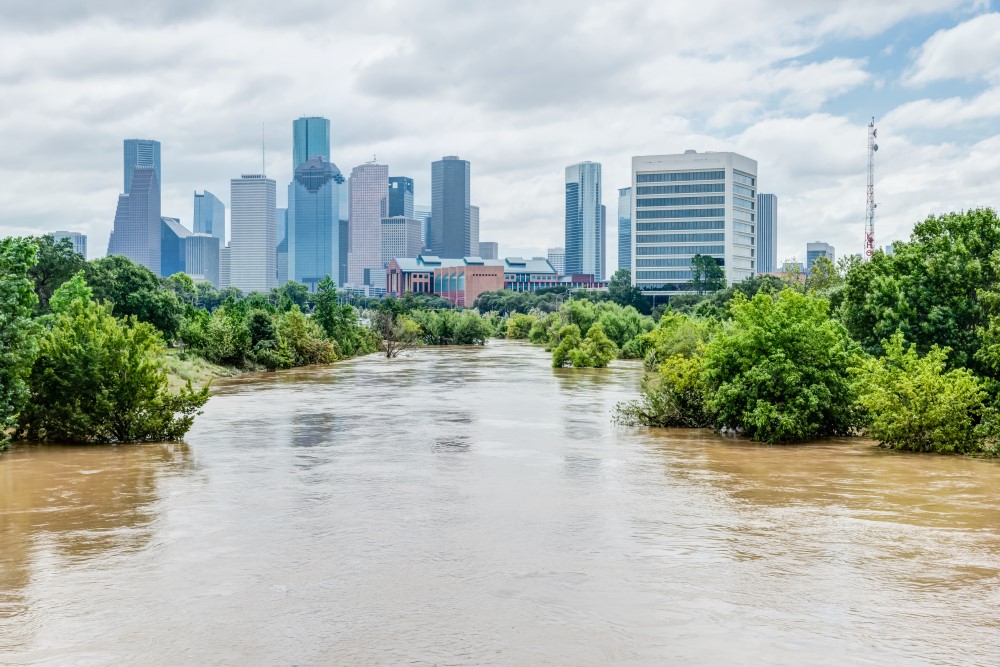5 scientists share their key points from the IPCC AR6 Synthesis Report

There is a rapidly closing window of opportunity to secure a liveable and sustainable future for all. That was the resounding message from the IPCC AR6 Synthesis Report published last week.
The climate report amalgamates the world’s most comprehensive assessment of climate change. Dubbed by the UN Secretary-General Antonio Guterres as a 'survival guide for humanity’, it details the unequivocal role of humanity in driving climate change and outlines what must be done to solve it. Being based on thousands of scientific papers and produced by hundreds of leading scientists, we asked five Cervest scientists to share their key takeaways from the final report.
1. Climate resilience is needed. Urgently.
Dr. Ben Laken, Chief Scientific Officer
“Urgency has to be the key takeaway. This is the last report this decade, and this is the last decade to keep on track for a 1.5˚C world. This is the last warning the world will get from the IPCC this decade. If we want to avoid the increasingly severe consequences of climate change, which will surely be more painful and costly than the interventions, we must implement solutions now.
The report makes the science clear and the risk to society unambiguous. It does not, however, make policy recommendations about what changes to implement. While these top-down reports are great for synthesizing the vast body of scientific literature into an authoritative report, we have already seen that they aren't good at driving granular decisions.
“Key barriers to adaptation are limited resources, lack of private sector and citizen engagement, insufficient mobilization of finance (including for research), low climate literacy, lack of political commitment, limited research and/or slow and low uptake of adaptation science, and low sense of urgency. There are widening disparities between the estimated costs of adaptation and the finance allocated to adaptation (high confidence).”
– A.3.6, pg. 9, Summary for Policy Makers, IPCC AR6 Synthesis Report
The technology and solutions to adapt already exist, it is now a question of aligning decision-making. This is why our mission at Cervest is so important. Cervest climate intelligence (CI) translates complex climate science into granular impacts and decision-useful insights that can inform asset-level adaptation and risk mitigation strategies. The collective and continued functioning of asset systems underpins climate resilience.”
2. The window is not yet closed
Dr. Laura Mazzola, Product Education Content Manager
“The report does highlight that although the window of opportunity is closing, it is not yet closed. Climate action is increasing worldwide. Some countries have been able to reduce emissions while continuing to grow, and hundreds of cities and regions have adopted Net Zero objectives that demonstrate both bottom-up and top-down efforts.
Although some future changes are unavoidable and/or irreversible, they can still be limited by deep, rapid and sustained global greenhouse gas emissions reduction. There are multiple opportunities to scale up this climate action with mitigation options becoming increasingly cost-effective and supported by the public. For example, the report states that from 2010 to 2019, the unit costs of solar, wind, and lithium-ion batteries dropped by 85%, 55% and 85%, respectively. If we are to avoid the worst of global warming, three to six times more investments need to be allocated to green technology. The good news is there is enough capital to close the global investment gaps, but it has to be redirected from fossil fuel to sustainable technologies.”
3. The climate and nature crisis are inextricably linked
Dr. Emily Neil, Ecosystem Scientist
“The report states that climate impacts on people and nature are widespread and severe, having already caused damages and irreversible losses in the world’s ecosystems, including local species losses and mass mortality events. Each additional degree of warming is projected to have dire consequences for biodiversity. This has already had adverse impacts on nature and climate-exposed sectors, including agriculture, forestry, and fisheries.
 – Figure SPM.3 (a), pg. 16, Summary for Policy Makers, IPCC AR6 Synthesis Report
– Figure SPM.3 (a), pg. 16, Summary for Policy Makers, IPCC AR6 Synthesis Report
We know there are routes we can take to tackle both the nature and the climate crises and increase society's resilience (adapting to any unavoidable impacts). These include rapidly phasing out fossil fuels, effectively and equitably protecting at least 30% of the world’s ecosystems, and investing in restoration and nature-based solutions.”
4. Adaptation is a non-negotiable
Dr. Helen Beddow, Climate Content and Knowledge Lead
“There is a narrow window in which we can limit GHG emissions to keep global temperatures to 1.5˚C - and it’s looking increasingly likely that we will miss it. To become climate resilient at the scale and pace necessary, we have to start talking more about adaptation on a practical, actionable level.
The IPCC assessments act as the source of global comprehensive knowledge on climate change. Given that each cycle of reports takes between five to seven years, and 100’s of scientists and experts to produce - this cycle of reports is the scientific basis that will underpin critical climate policy and decision-making for the rest of the decade. With so much at stake, my hope is that the report has the ability to get the message across to policymakers on how urgently we need adaptation.”
5. Next step: understanding climate risk exposure
Dr. Chloé Prodhomme, Climate Scientist
“The report unequivocally states that climate change is real, is already happening and exposure to climate risk will continue to escalate over the coming decades. Our entire society, from citizens to governments, financial actors to private companies – regardless of their size – will need to adapt to this risk. The first step of climate adaptation is understanding our exposure and risk. This is what the IPCC report does not provide, but what Cervest CI does. It enables decision-makers to screen, analyze and act on all the main risks listed in the report.
“Evidence of observed adverse impacts and related losses and damages, projected risks, levels and trends in vulnerability and adaptation limits, demonstrate that worldwide climate resilient development action is more urgent than previously assessed in AR5.”
– C.1.1., pg. 25, Summary for Policy Makers, IPCC AR6 Synthesis Report"
Powering climate action
Climate action is as much about preserving opportunity as it is about preventing risk. The IPCC AR6 Synthesis delivers a wealth of information about why we need to build climate resilience – urgently. By using climate intelligence to climate-align actions on every built and natural asset, decision-makers can preserve the opportunity to transition smoothly to a low-carbon economy.
Read “3 takeaways for policymakers from the IPCC AR6 synthesis report” for more insights from the latest IPCC report. Alternatively, for more news and insights from Cervest, subscribe to our newsletter.
Share this article
Our latest news and insights

Capgemini to embed Cervest climate intelligence into climate transition, adaptation and sustainability strategies for their clients
Read more
What is climate intelligence and why do businesses and governments need it?
Read more
